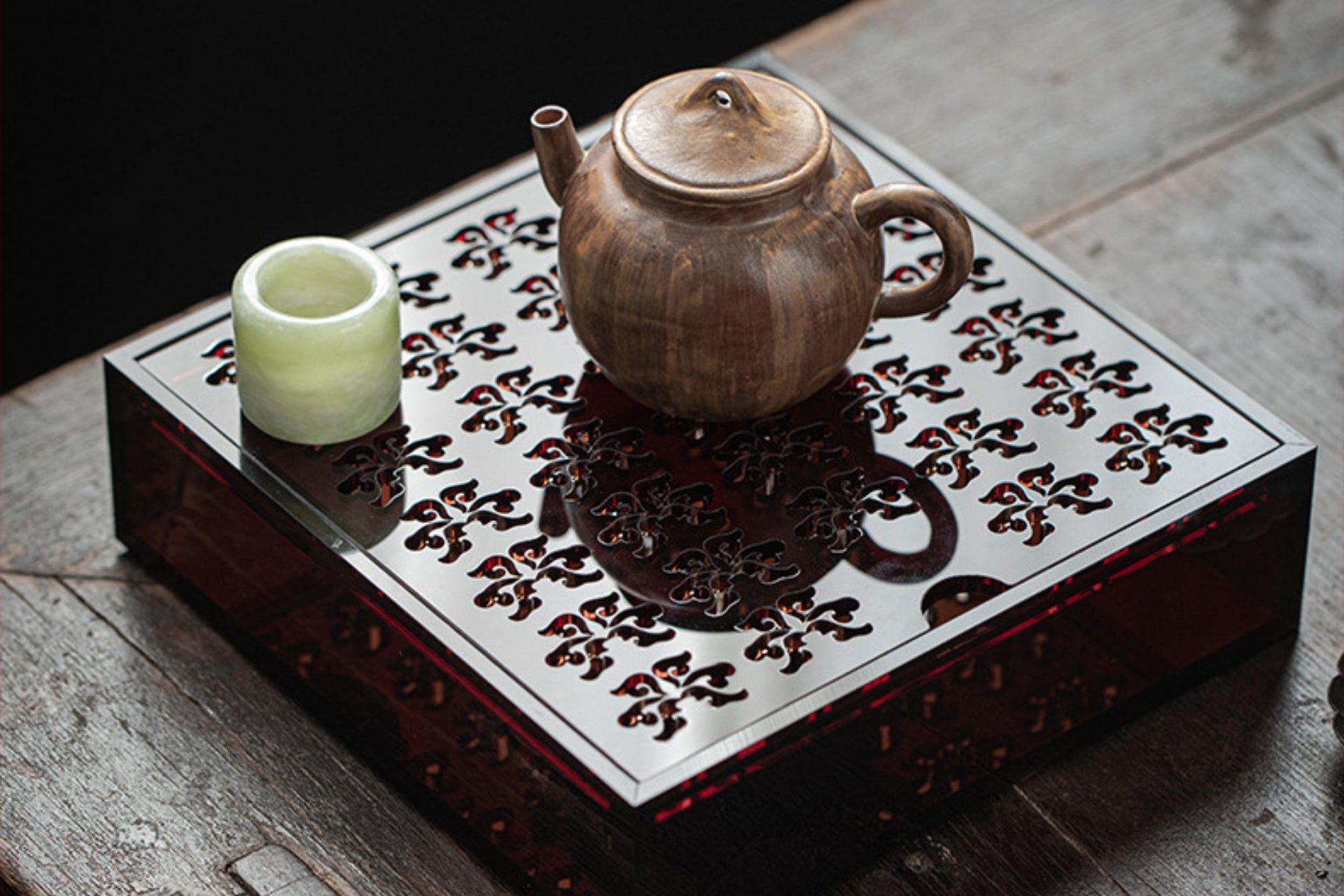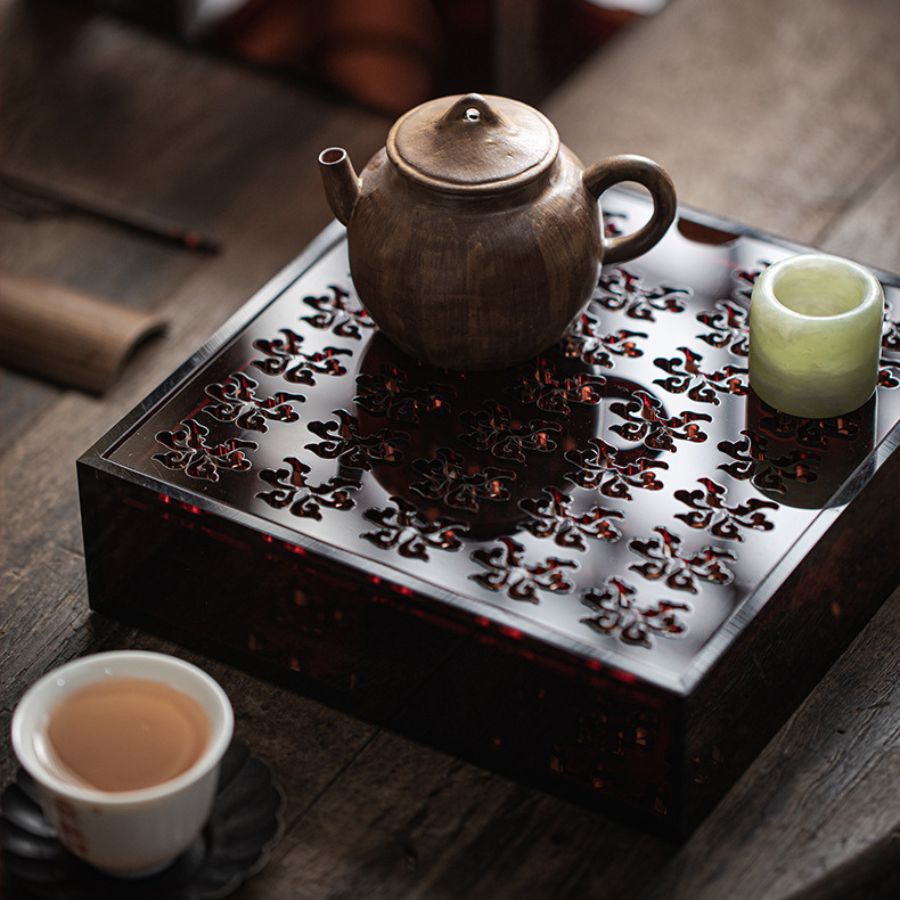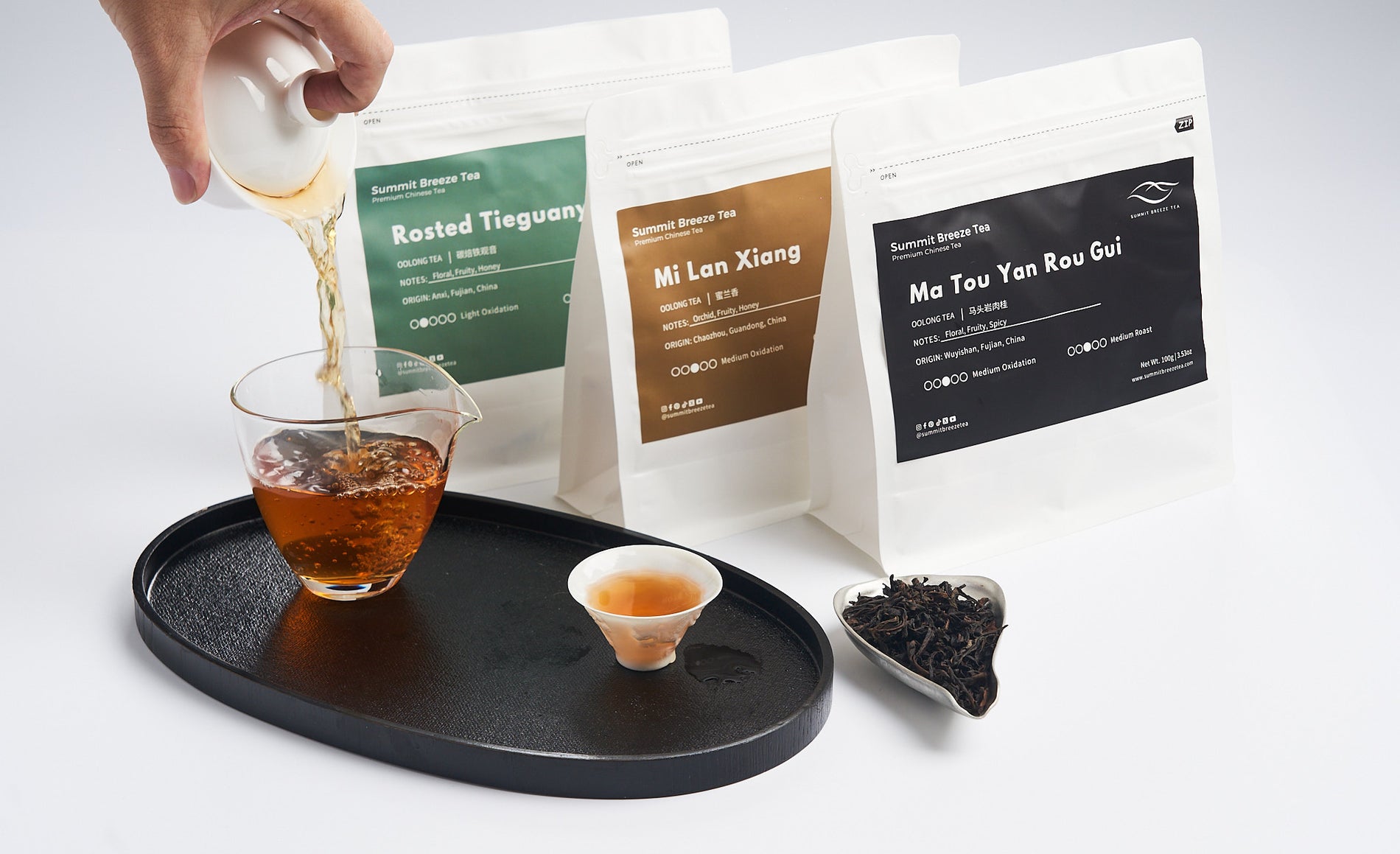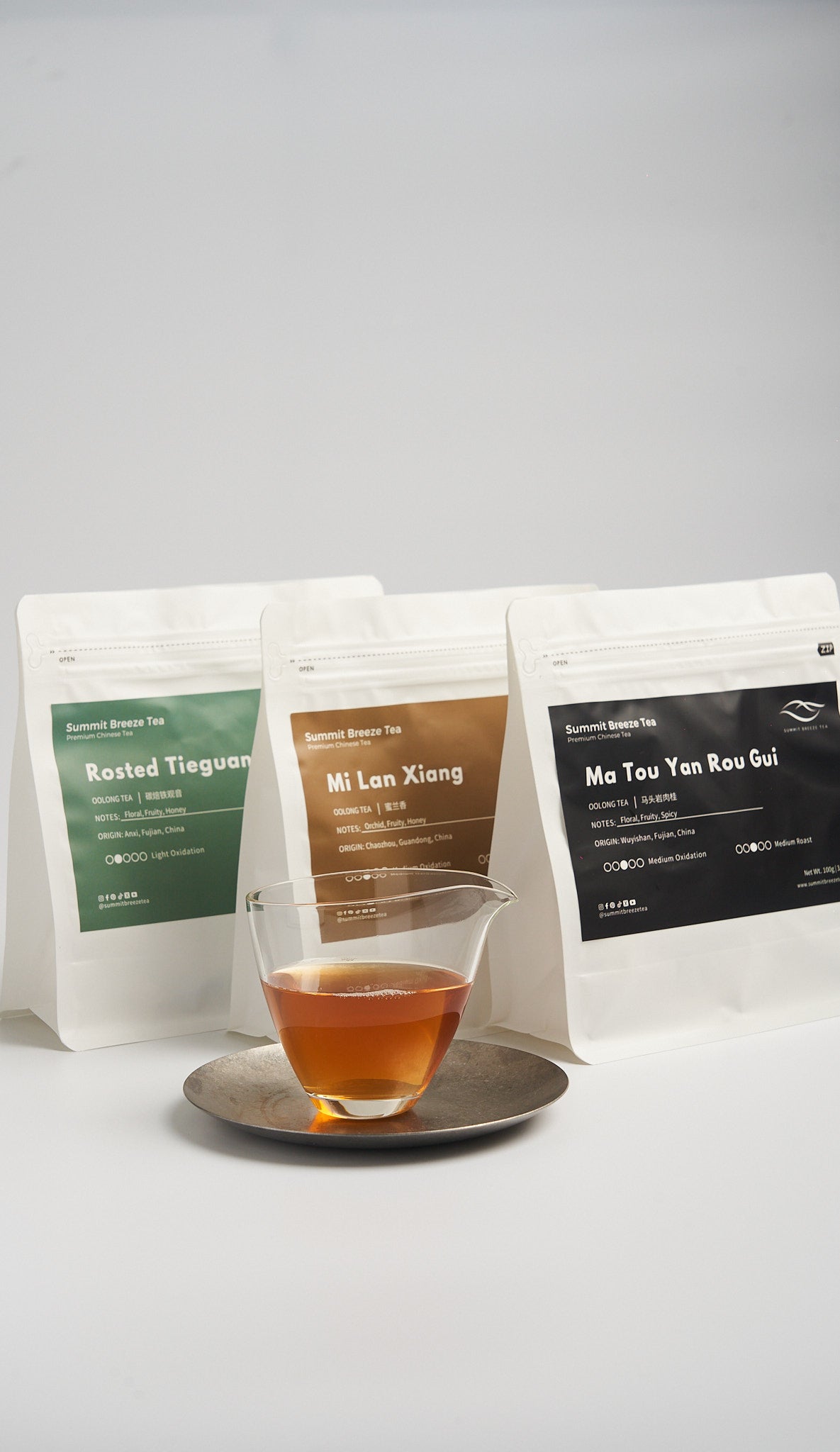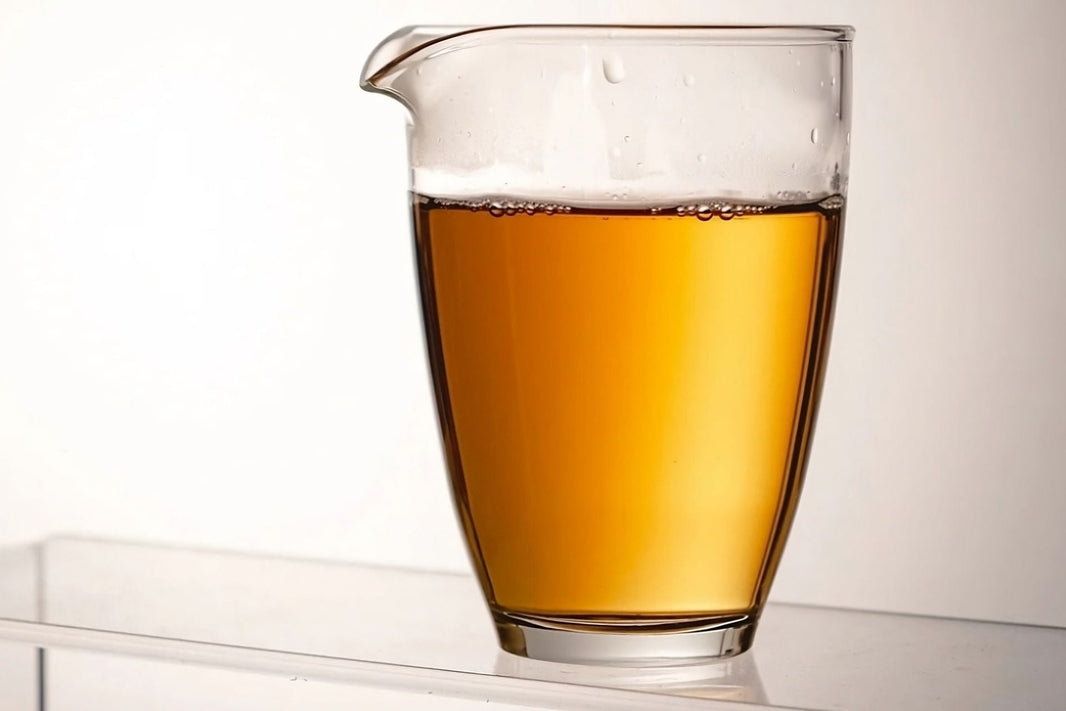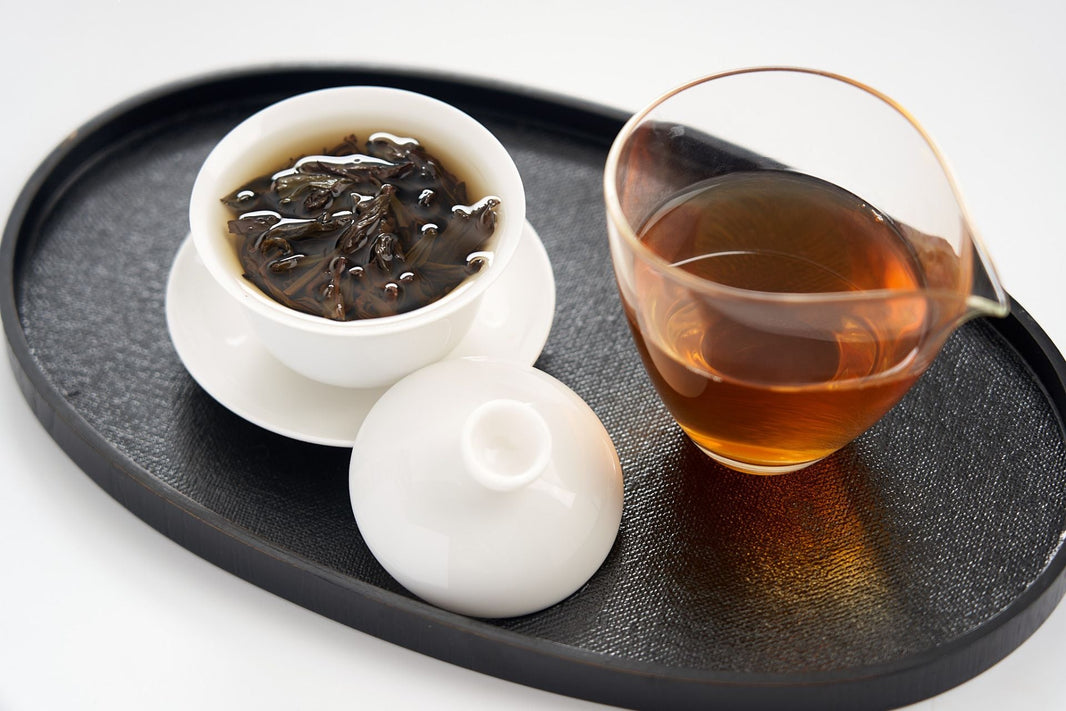What Defines the Top Oolong Tea?
As an Oolong tea enthusiast with years of experience, I've had the pleasure of trying hundreds of varieties. Through conversations with seasoned tea farmers, I've come to understand that three main factors contribute to a great Oolong tea: the type of tea plant, the region it's grown in, and the way it's made.
This article explores the top regions for high-quality Oolong tea. It also looks at the key steps that affect its quality.
What is Oolong Tea?
Oolong tea is one of the six main types of Chinese tea. It's known for its rich, flavorful, floral, and fruity notes, which chefs love.
As a semi-oxidized tea, oolong's oxidation levels vary from 10% to 70%. This range of fermentation gives it a complex aroma and taste.
Oolong teas are mainly categorized by where they're produced and how they're processed. There are four main types:
- Southern Fujian Oolong (like Tieguanyin)
- Northern Oolong (like Wuyi Rock Tea)
- Guangdong Oolong (like Fenghuang Dan Cong)
- Taiwan Oolong (like Wenshan Baozhong and Dongding Oolong)
Best Oolong Tea Production Areas
The core production areas for Oolong tea set the baseline for quality.
Good regions, good tea plants, and proper cultivation and processing all come together to produce top-notch Oolong tea.
Only teas from these core areas can showcase unique characteristics, like the “yin yun” of Tieguanyin and the “yan yun” of rock tea.

Northern Fujian Oolong
Northern Fujian Oolong is from northern Fujian, with Wuyi rock tea being its most representative type.
The Wuyi rock tea region is divided into three categories:
- Zheng Yan (core rock tea)
- Ban Yan (half-rock tea)
- Zhou Cha (tea from outside the scenic area)
Typically, high-quality rock tea comes from the Zheng Yan and Ban Yan areas. Zhou Cha is usually of lower quality.
Ban Yan consists of many tea gardens, accounting for about 90% of the area. These teas can range widely in price and quality.
Southern Fujian Oolong
The Southern Oolong production area is Anxi County in Fujian Province. It is divided into two areas: Inner Anxi and Outer Anxi.
Inner Anxi is surrounded by mountains and shrouded in mist, while Outer Anxi is at a lower elevation, mostly in basins. This is why Tieguanyin from Inner Anxi has its unique “yin yun.” Notable areas in Inner Anxi include Gande, Xianghua, and Xiping, etc.
Guangdong Oolong
In Chaozhou, you’ll see locals enjoying tea everywhere. Kung Fu tea is an integral part of life here.
Fenghuang Mountain is famous for Fenghuang Dan Cong. Located about 50 kilometers from Chaozhou, it has a high elevation and consistent fog, earning it the nickname "the roof of Chaozhou."
Tea from this region is divided into four grades based on elevation. These grades are low mountain, medium-low mountain, medium mountain, and high mountain. The high mountain grade is considered the best.
Taiwanese Oolong
Now, let’s head to Taiwan, which is just across the sea from Fujian.
Taiwan’s core Oolong tea production areas are in southern Taiwan, Chiayi, Taitung, and Hsinchu County. Famous areas include Dongding Mountain, Ali Mountain, Luye, and Beipu.
Oolong Tea Production
An oolong tea maker with 20 years of experience once told me that good oolong tea depends on three factors: the right processing, effective tea garden management, and favorable weather conditions.
Sun withering, the process of drying tea leaves under the sun, is crucial in Oolong tea production. It brings out the tea's unique floral and fruity aroma. As a result, Oolong tea made on sunny days tends to taste better than that made on rainy days.

Another vital factor is the oxidation process. Experienced tea makers stress the need for proper oxidation. It helps to reduce bitterness and greenness in the tea.
Based on oxidation and roasting levels, Oolong tea can be categorized as follows:
Lightly Oxidized Oolong
Wenshan Baozhong from Taiwan has the lightest fermentation level among Oolong teas, around 8-10%.
Its roasting is also minimal, resulting in a brew similar in color to green tea.
The modern, lightly fragrant Tieguanyin has been influenced by Taiwanese methods. Its oxidation levels are around 15-20%. It features a distinct orchid aroma, and both the dry tea and brew appear green.
Moderately Oxidized Oolong
Moderately fermented Oolong includes Tieguanyin, Wuyi rock tea, and Guangdong Fenghuang Dan Cong. They are traditionally made.
You're right, Tieguanyin isn't just lightly oxidized. In fact, traditional Tieguanyin is usually moderately oxidized. It's much like today's rock tea and Dan Cong. This traditional process involves heavier shaking, which helps bring out the floral and fruity aromas.
If you’ve never tried traditional Tieguanyin, it’s worth a taste. It offers a different experience.
Heavily Oxidized Oolong
Bai Hao Oolong, also known as Oriental Beauty, is unique to Taiwan.
It has the highest fermentation level among Oolong teas, often exceeding 60%, with some even over 80%.
It has visible white tips, an amber color, and features honey and ripe fruit aromas, delivering a sweet and rich taste.
Our 6 Top Picks
We've picked the top 6 Oolong teas. Each is from the finest regions and made using traditional methods that enhance its unique qualities.
Whether you're new to Oolong or a seasoned tea enthusiast, these teas are sure to impress.
Ma Tou Yan Rougui
This medium-roasted tea is a favorite among tea enthusiasts in China. It maintains the floral and fruity notes of Oolong, with an added hint of spice.
If you're into bold and slightly invigorating flavors, you should try this Matouyan Rougui from Wuyi Mountain.
Su Xin Lang Oolong
This tea is ideal for those who like their roast on the lighter side.
With its moderate roast, it showcases floral aromas, and its brew is filled with floral and fruity notes that finish with a hint of sweetness. You'll also detect subtle hints of Fenghuang Dan Cong in the flavor.
Traditional Tieguanyin
If you’ve never tried traditional Tieguanyin, you must!
This tea follows the crafting methods from the 1980s to the 1990s. Typical Tieguanyin is lightly fermented.
Traditional Tieguanyin has a heavier fermentation, like Fenghuang Dan Cong and rock tea. This allows for a richer floral and fruity taste, making it much more complex.
Duck Shit Dancong
A great option for beginners who just got into Dan Cong, this lightly roasted tea has a unique creamy aroma. It’s smooth and sweet with a lasting aftertaste, offering a gentle flavor profile alongside hints of Tieguanyin.
Honey Orchid Fragrance Dancong
With rich honey and sweet notes, this tea has distinctive floral and fruity notes. Although it has a brief bitterness, it quickly transforms into a noticeable sweetness.
It’s a tea you can enjoy every day. Sourced from the core area of Fenghuang at elevations above 800 meters.
Old Bush Shuixian
This Old Bush Shuixian tea originates from the heart of Wuyi Mountain. Growing in a humid environment, it develops a refreshing flavor with mossy notes and hints of bamboo leaves.
As the name suggests, Old Bush Shuixian comes from tea plants over 60 years old. This gives the tea its distinct, woody aroma.


